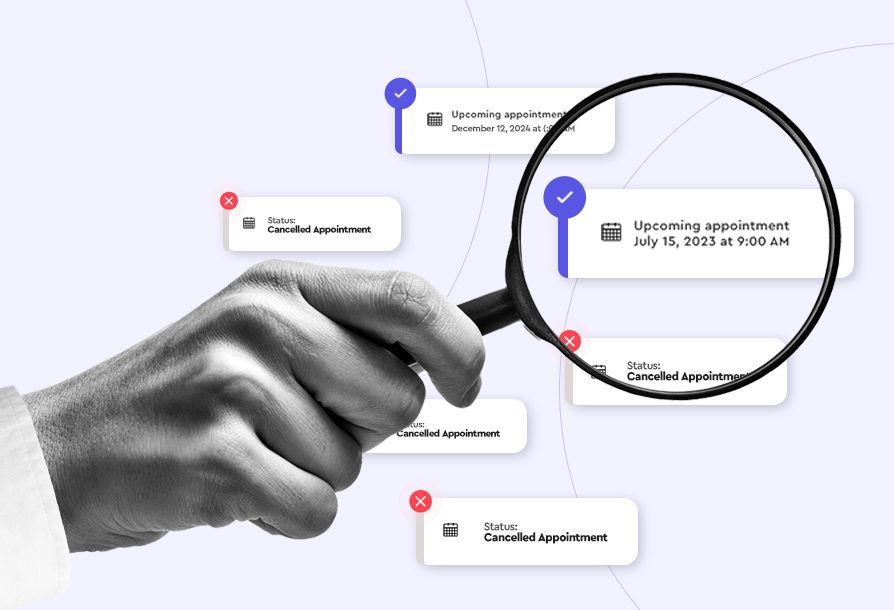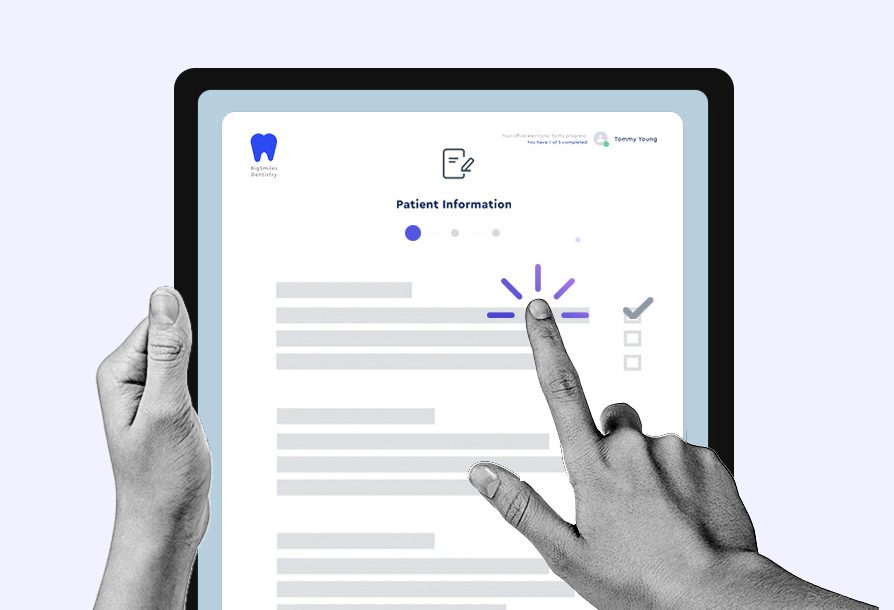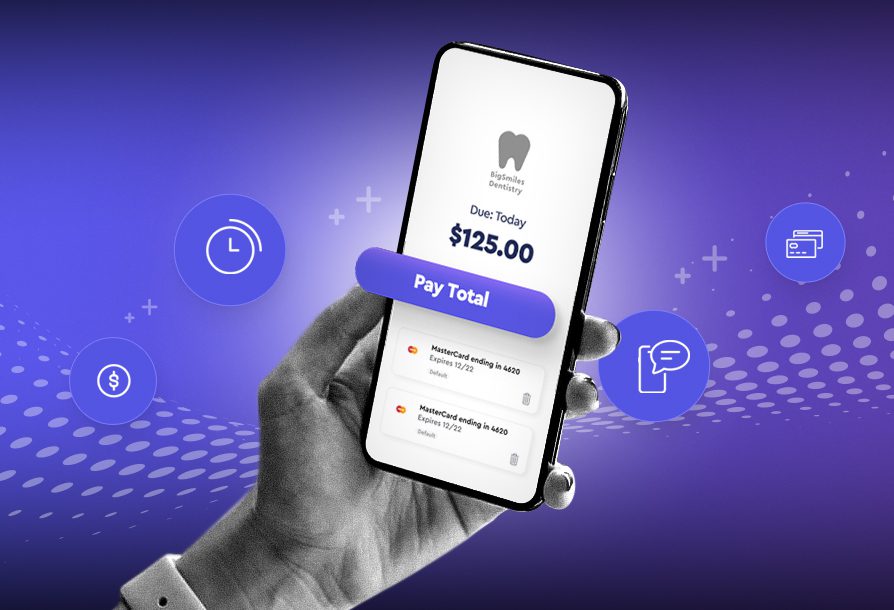Lost & Found: Strategies for Tracking and Recovering Canceled Dental Appointments

As winter approaches and the holiday season takes center stage, dental offices brace themselves for a seasonal challenge – the surge in canceled and failed appointments. While the winter wonderland outside evokes a sense of magic and festivity, within the walls of dental practices, these cancellations cast a chill on both financial stability and patient care. In this blog post, we delve into why dental offices should actively track these occurrences, which metrics to pay attention to, and explore strategies to get those appointments back on the schedule.
Know Your Numbers…the Importance of Tracking Cancelled/Failed Appointments
Canceled and failed appointments aren’t metrics that any dentist wants to stew over, but understanding why they happen is key to preventing and recovering from them! Here’s a rundown on why keeping an eye on cancellation metrics is a game-changer for dental practices:
- Smart Staffing: Knowing when cancellations are more likely helps in scheduling staff effectively, preventing chaos during those unexpected lulls.
- Appointment Availability: Spotting cancellation patterns allows dental offices to open up appointments strategically, making sure clients can book when they’re most likely to commit.
- Communication Sweet Spot: Metrics unveil the lead time for cancellations, offering the chance to send timely reminders or updates, reducing the chances of last-minute bails.
- Policy Perfection: Metrics help fine-tune appointment policies. Dental practices can adjust cancellation rules, introduce penalties for serial cancellers, or offer flexible rescheduling options based on data-backed insights.
- Evolving for Excellence: Metrics create a feedback loop. Analyzing cancellation data gives dentists insights into why cancellations happen, allowing for continuous improvements in services, policies, and overall patient experience.
Measure What Matters…Which Metrics to Track
Tracking cancellation metrics is not just about crunching numbers or merely a reactive measure; it’s a proactive strategy for dental practices to adapt, thrive, and turn cancellations into opportunities for growth and improvement. Here are the key metrics to track when it comes to cancellations:
Cancellations by Day of the Week
- When dental offices know the days when cancellations happen the most, they can plan things better. It’s like knowing when the traffic is heaviest, so you plan your route accordingly. By doing this, dental practices make sure they have enough people and tools ready for the busy times. This planning helps things run smoothly every day and keeps the work flowing steadily without too many hiccups.
- When dental offices see the days with fewer cancellations, they can then plan their staff schedules more precisely, making sure there’s just the right number of people around. By doing this, dental practices make sure their staff is available when there are fewer cancellations, making the work smoother. It’s a bit like catching a break when things are quieter, and this smart planning helps the practice make the most money during these calmer times.
Cancellations by Time of Day
- When dental offices figure out the hours when cancellations happen a lot, they can plan their staff schedules better, making sure the right people are on deck when cancellations are likely. This smart planning avoids putting too much pressure on resources.
- Knowing when cancellations peak lets dental practices make their services more available during these busy times. Using this information, they can tweak schedules to offer appointments when people are more likely to keep them. It’s not just about knowing when cancellations are high; it’s about being flexible and resilient in managing appointments, making the whole process easier for everyone.
Cancellations by Booking Time:
- Do cancellations happen more when people book appointments closer or farther away? By looking into this, dental practices can decide whether they need to change things up based on what they find about booking patterns.
- Reminders are a must-have for every dental practice, and they can be especially helpful for patients who book further in advance, giving them more time to forget, as well as for those who tend to cancel at the eleventh hour. It’s like giving them a nudge to keep their commitment.
Tips for Rescheduling Canceled and Failed Appointments
Rescheduling canceled and failed appointments is an art that requires finesse and proactive communication. Here are key strategies to navigate the process effectively:
Communication Strategies
- Create clear and concise communication messages that convey the importance of the appointment and the potential consequences of repeated cancellations.
- Implement automated reminder systems to keep patients informed about upcoming appointments. This reduces the likelihood of forgetfulness and last-minute cancellations.
Flexible Rescheduling Options
- Offer multiple channels to reschedule appointments, such as online scheduling, calling or texting the office, or even using a patient portal (coming soon to PbN!) By giving different choices, it increases the chances that patients can find a way that works best for them.
- Make rescheduling painless by implementing user-friendly scheduling tools that simplify the rescheduling process. Clear interfaces and intuitive systems encourage clients to promptly find alternative appointment slots.
Prioritizing Urgent Cases
- Establish a system to identify appointments that are really important and can’t wait, like having a special tag for things that need urgent attention. This way, your office can make sure these appointments get first priority when it comes to rescheduling.
- Develop a streamlined process for rescheduling urgent cases, minimizing administrative hurdles and ensuring that these crucial appointments are promptly addressed.

The Magic of the ASAP List
So far we’ve covered the the importance of tracking canceled and failed appointments, the specific metrics to track, and how to effectively reschedule missed appointments.
One last thing we want to address is a powerful tool in filling the last minute holes left by cancellations…the ASAP (As Soon As Possible) list. What could make filling last minute cancellation easier than having a group of patients who are ready and willing to take up appointments as soon as they become available?
Here are just a few benefits of using the ASAP list in these instances:
- Instant Problem Solver: The ASAP list operates like a quick fix for scheduling hiccups. When cancellations create gaps in the daily calendar, having a ready-to-go list of patients willing to step in instantly transforms a challenge into an opportunity.
- Maximizing Operational Efficiency: Dental practices can tap into the ASAP list to efficiently fill unexpected openings, ensuring that each appointment slot contributes to revenue and maintains a steady workflow. This agile approach minimizes the impact of cancellations on both financial stability and daily operations.
- Enhancing Patient Experience: Patients on the ASAP list experience the perks of flexibility and immediacy. By offering them the chance to fill last-minute openings, dental practices create a positive experience, showing responsiveness to patient needs and fostering a sense of priority and value.
- Strategic Filling of Urgent Cases: The magic of the ASAP list extends to prioritizing urgent cases. Practices can strategically reach out to patients on the list, ensuring that critical appointments are swiftly rescheduled, minimizing delays in essential treatments and procedures.
- Streamlining Communication: Implementing the ASAP list streamlines communication. Practices can efficiently notify patients about immediate opportunities, reducing the time gap between a cancellation and the slot being filled. This not only aids in preventing revenue loss but also ensures a proactive and patient-centric approach to scheduling.
In essence, the ASAP list provides dental practices with a dynamic solution to swiftly and effectively address scheduling gaps. By leveraging this tool, practices not only recover from cancellations promptly but also enhance patient satisfaction through a responsive and efficient scheduling process.
Looking for a software to help your practice track canceled and failed appointments, automate patient reminders, provide online appointment booking, and optimize your ASAP list? Practice by Numbers is your one-stop-shop for all these solutions and more!
Ready to get started?
To learn more about prioritizing your patients experience, reach out to us for a demo today.


